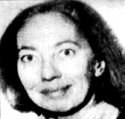The disappearance of Dr. Margaret Mary Kilcoyne on a frigid Nantucket night in January 1980 remains one of the island’s great unsolved mysteries. It is a cold case with no definitive answers or explanations, and it still haunts the Nantucketers who were responsible for finding her. To this day, they don’t agree on what exactly happened to Kilcoyne that night. And the curious circumstances both before and after her disappearance have never fully been explained. “The whole thing, right from the beginning, was strange,” says retired Nantucket Police Department captain George Rezendes, one of the lead investigators of the case. “You’d have to say it was just bizarre from the beginning.” When Dr. Kilcoyne made her fateful final trip to Nantucket thirty-six years ago, she was telling her friends and family that she had made a significant medical discovery that would win her a Nobel Prize. An assistant professor of medicine at the Columbia College of Physicians and Surgeons, Kilcoyne left her laboratory in New York City flying high and planned to unwind and celebrate with a brief getaway to the island. She was met on Nantucket by her brother Leo, an executive with IBM in Canada. On the evening of January 25, 1980, she dined at her home in Tom Nevers with Leo and two friends, Nantucket residents Richard and Grace Coffin. They were the last people to ever see Dr. Kilcoyne.
The next morning Leo Kilcoyne called the Nantucket Police Department at 7:15 a.m. to report that his sister was missing. Her winter coat, boots, wristwatch and purse had been left behind in the home, but Dr. Kilcoyne was nowhere to be found. An extensive search began almost immediately, as police officers scoured the acres of dense scrub oak that surrounded Kilcoyne’s home, as well as Tom Nevers Pond and the southeastern shoreline of the island. But nothing turned up. There were no footprints or anything to indicate where she might have gone.
The island authorities checked in at the airport and the Steamship Authority to see if she had left on a departing flight or ferry. They stopped by Nantucket Cottage Hospital on the chance she had been admitted. Still, nothing. The search expanded into the moors, cranberry bogs and out to Polpis and Sankaty. By noon that day, a Coast Guard helicopter had been called in to assist the search team on the ground, which had grown to include State Police troopers and island firefighters. For two days they searched Nantucket with forty-five public safety personnel who covered the entire east end of the island on foot, checking unoccupied houses and even sending divers into Tom Nevers Pond before the effort was called off on January 28th. Rezendes continued to check the beach for Kilcoyne every morning over the next few days, but he and other investigators found no signs of foul play and concluded that the doctor must have committed suicide by walking into the Atlantic Ocean.




